Chasing Beauty and Sublime Solitude in Venice
Traveling solo in Italy in the shadow of its glamorous Renaissance courtesans.

It feels predictable to admit one’s love for Italy. Centuries of writers have extolled the virtues of Italian culture, artwork, and culinary traditions, while the rise of social media has rendered it nearly impossible to escape from. Open any app during the summer, and you will see an endless scroll of ruby-hued spritzes, sunbathers along the Amalfi Coast, or Vespa drivers speeding along a seaside highway. Italy seduces the world daily with her promise of “La Dolce Vita,” but it is a seduction that has led to overcrowding and nearly impossible navigation during the warmer months. When I was invited to attend a friend’s Tuscan wedding this May, I secretly harbored a fear that “my” Italy would be too overrun—having studied in Florence 17 years ago, I have the privilege to remember it before TikTok took over. Using a wedding weekend as an excuse for a two-week vacation, I knew no trip to Florence would be complete without a visit to the nearby city that truly captured my heart and imagination—the slowly sinking pleasure palace of Venice.
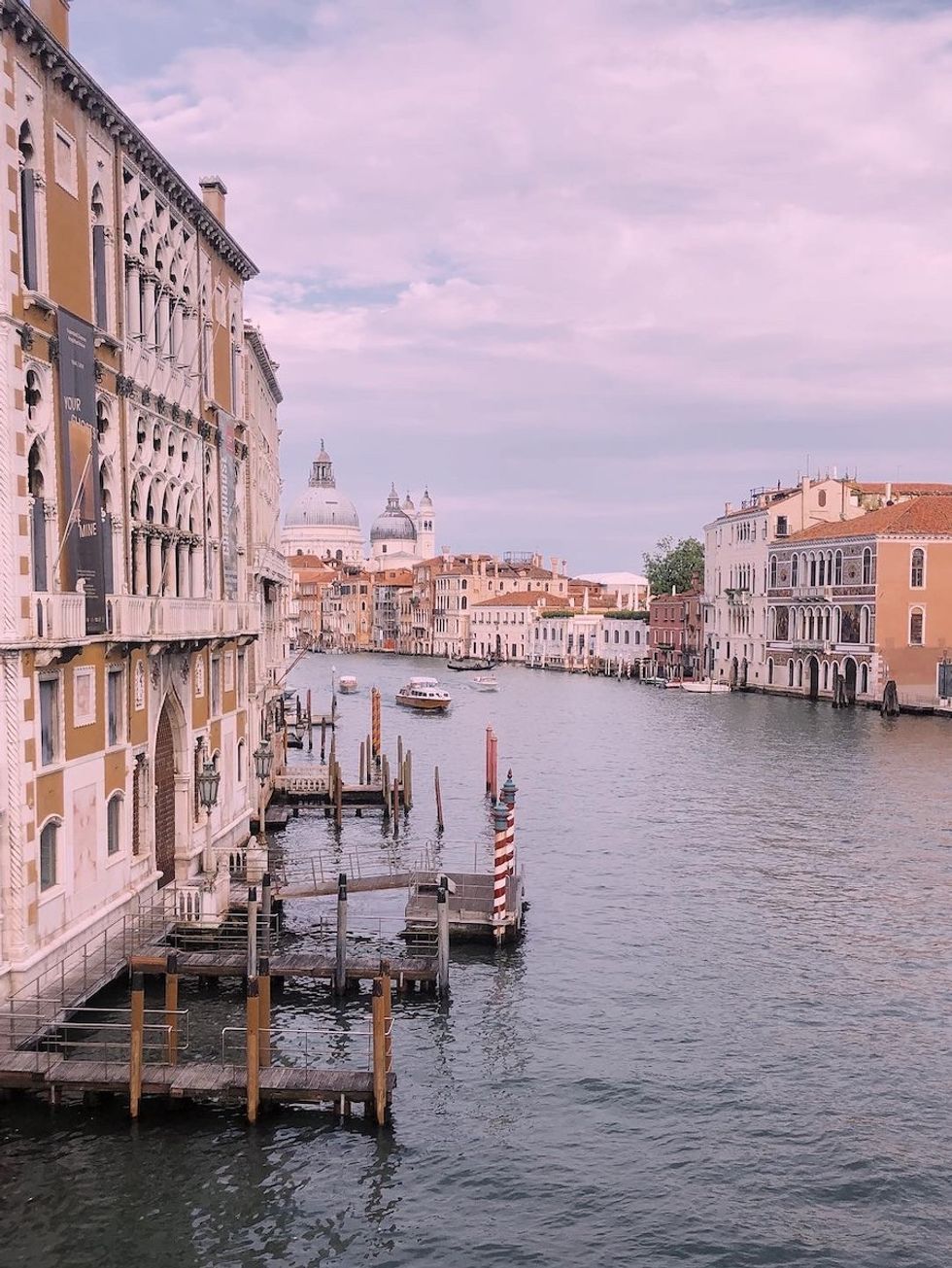
Sarah Hassan
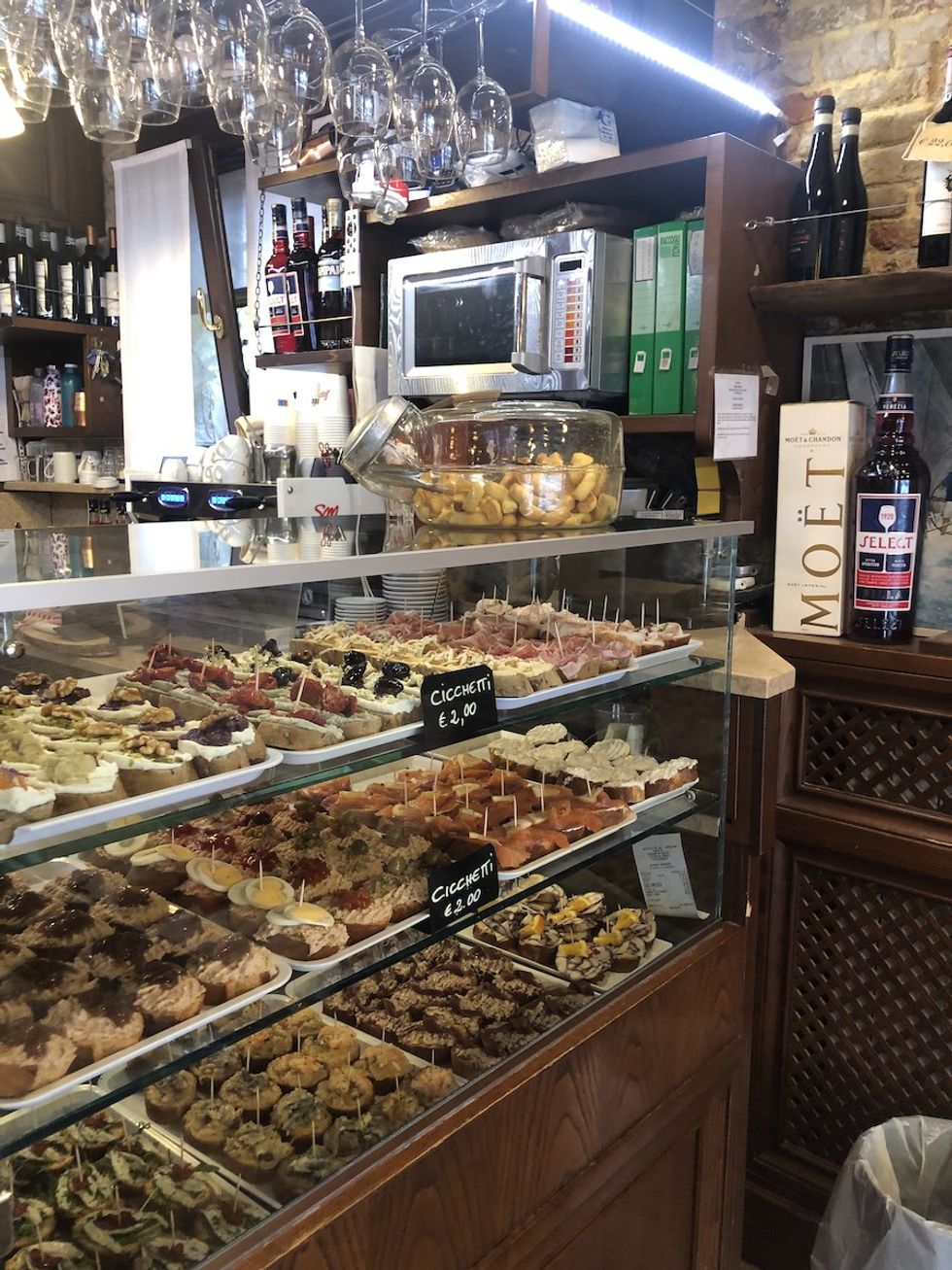
Sarah Hassan
Tourism to Venice has become so unsustainable that day-trippers now need to pay an entrance fee. To alleviate my fear of the crowds I knew awaited me, I set one intention for the trip: to be as luxurious as possible, whether it was where I had my aperitivo or how I escaped the hustle and bustle. I took my cue from the city’s famed “Cortigiane Oneste,” or honest courtesans, such as the famous Veronica Franco—who inspired the film Dangerous Beauty—Gaspara Stampa, considered to be one of the greatest poets of the Renaissance, and my perennial favorite, though perhaps less honest, Virginia Oldoini Rapallini, Countess da Castiglione, known for her decadent vanity, scandalous affairs, and later photographic portraits. The women were not only known for their sexual prowess and erotic power but also for their command of public and political spheres thanks to their high birth, artistic talent, and intellectualism. Far from the flesh trade, which took place under one of Venice's many darkened bridges, a cortigiana onesta was well-dressed, worldly, and served only the upper echelons of society with her wit and beauty, and became a creature so coveted that a Venetian guidebook complete with a price list was produced in 1565 to map the city's “dangerous beauties.” In the same city nearly five centuries later, I would be alone, and these would be my patron saints and the trip’s guiding forces toward beauty and indulgence, the high season be damned.

Sarah Hassan
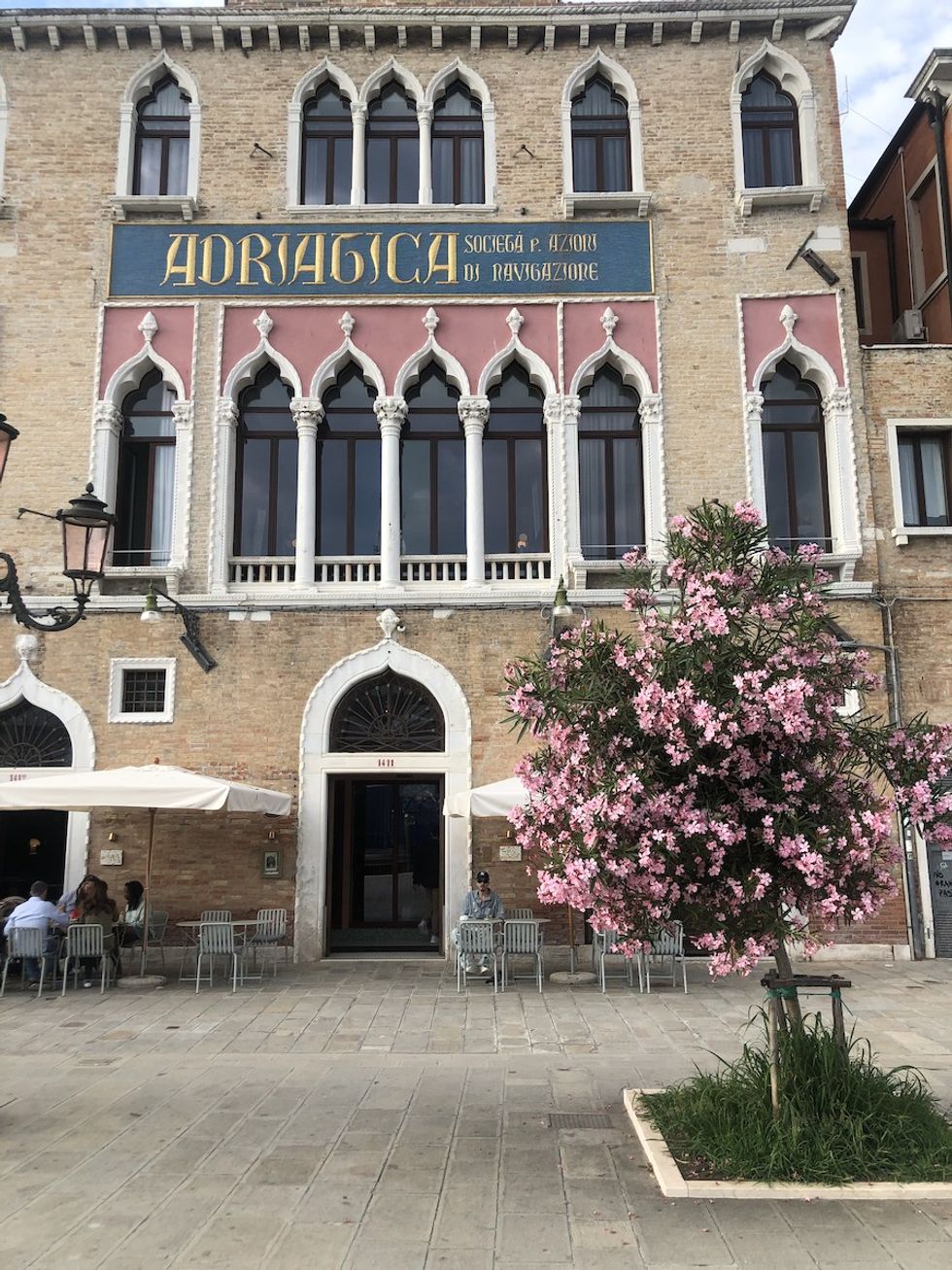
Sarah Hassan
Arriving in Venice by train never fails to thrill. After an endless expanse of green unfurls outside your window, suddenly, you are gliding over the water and into the baroque heart of a floating city. The many vaporetto (the public Venetian waterbuses, not to be confused with the private taxis) waiting to whisk you to your home for the evening allow this thrill to continue, and I enjoyed a saline-sprayed ride to Il Palazzo Experimental, a gorgeous boutique hotel in a quieter part of the Dorsoduro. In addition to the charming design of the waterfront space, the hotel boasts an Experimental Cocktail Club bar and seasonally-focused restaurant. In a place that tends to feel overrun, the Palazzo offered that rare Venetian pastime of peace and quiet. I enjoyed my morning cappuccino in a cozy corner of the restaurant surrounded by pin-striped walls and charming terrazzo details, ready to explore the city with the ease of a local, starting with cicchetti at the Osteria Al Squero. These hearty snacks of fish, cured meats, and cheeses arranged on small slices of bread are best enjoyed with a crisp white wine or prosecco, no matter the time of day. What makes this osteria so special is its location directly across the canal from the historic boatyard, Squero di San Trovaso. With the prosecco stinging my throat after savoring a bite of baccola (whipped salt cod, an Italian favorite, spread on toast), I watched craftsmen repair the funerary-like gondolas upturned on stilts in the buttery morning light while gondolieri in their striped shirts and red-ribboned boater hats elegantly navigated their jet-black passenger boats with a single paddle in the churning waters.
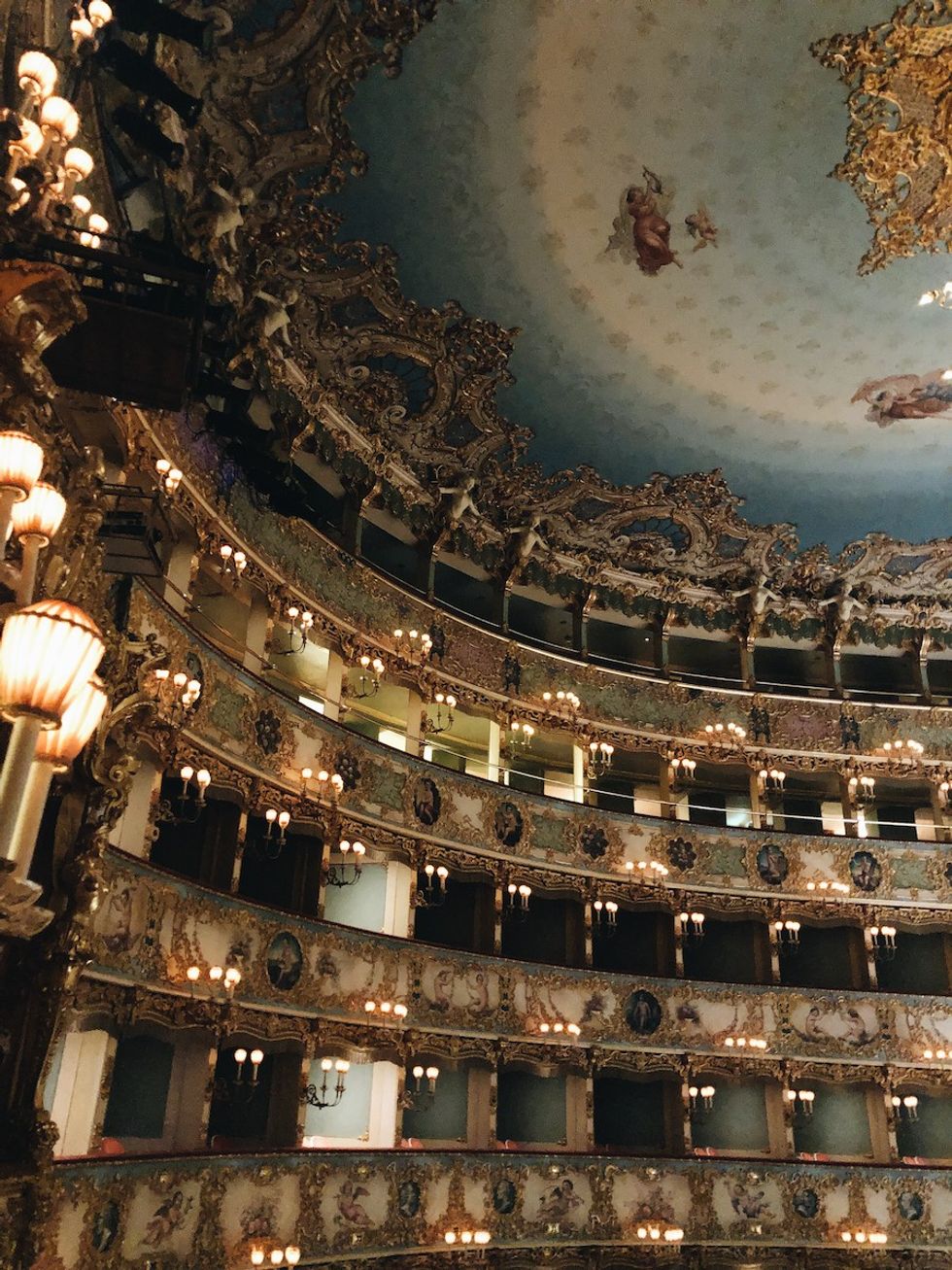
Sarah Hassan
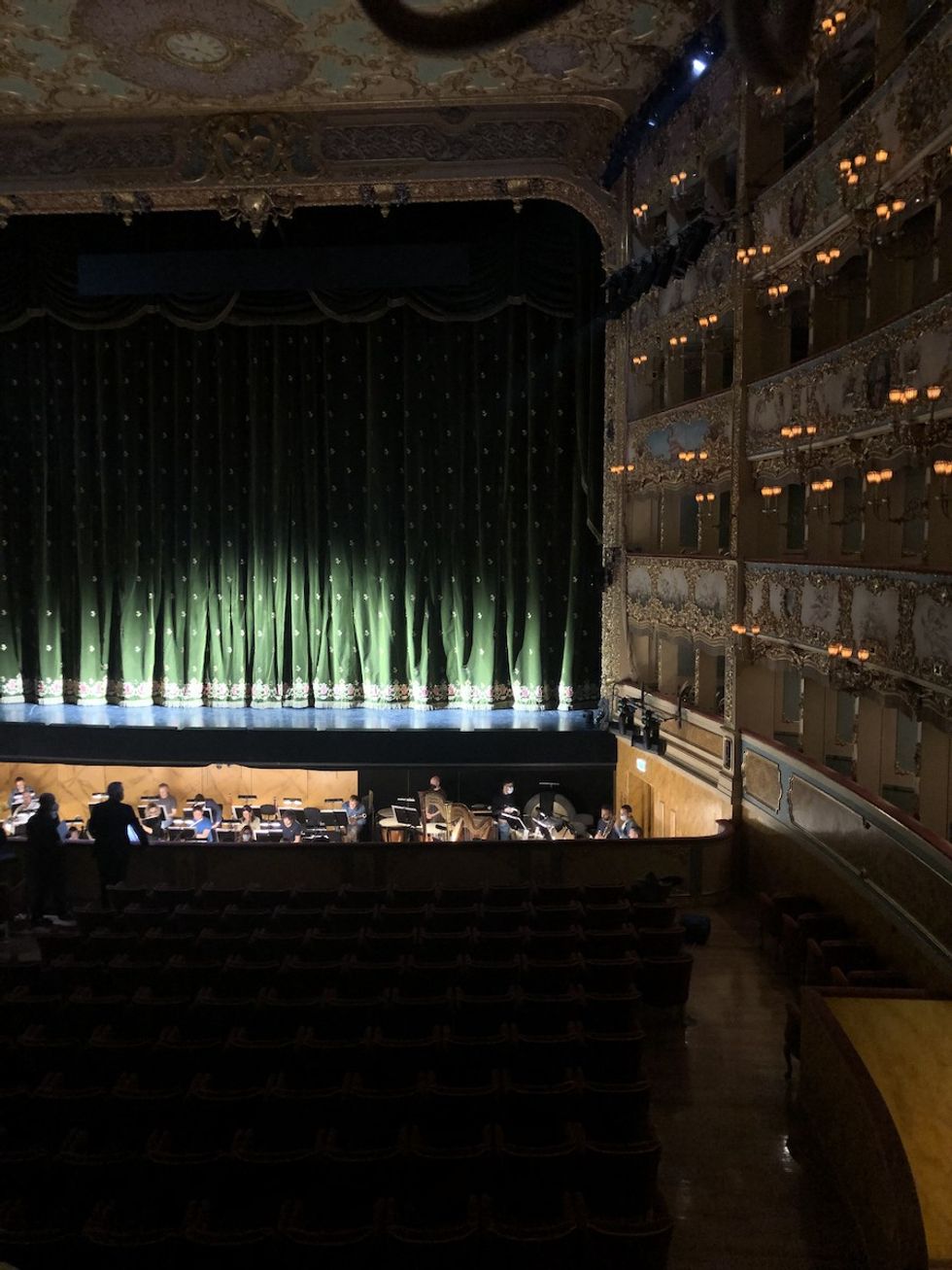
Sarah Hassan
Milan may have La Scala as the pantheon of opera and music, but Venice has La Fenice, the phoenix of Italian theaters that suffered not one but two historic fires, first in 1836 and then in 1996, before being restored to its original jewel-box glory. Even if the trilling of a soprano isn’t your idea of a leisurely afternoon, there is no place like the Fenice for daydreaming. The pastel-hued theater, with its painted ceiling, intricate gilt work, and rows of red velvet seating, provided a cinematic backdrop to a midday’s rest. Standing in one of the private ornately mirrored boxes, I found my gaze traveling skyward, wondering how a few flirtatious gestures of a lace fan would have fared during a performance of Verdi or Mozart. The Fenice remains one of my preferred methods of Venetian time travel, and if you are lucky like I was, you may even catch the singers mid-rehearsal during your visit.

Sarah Hassan
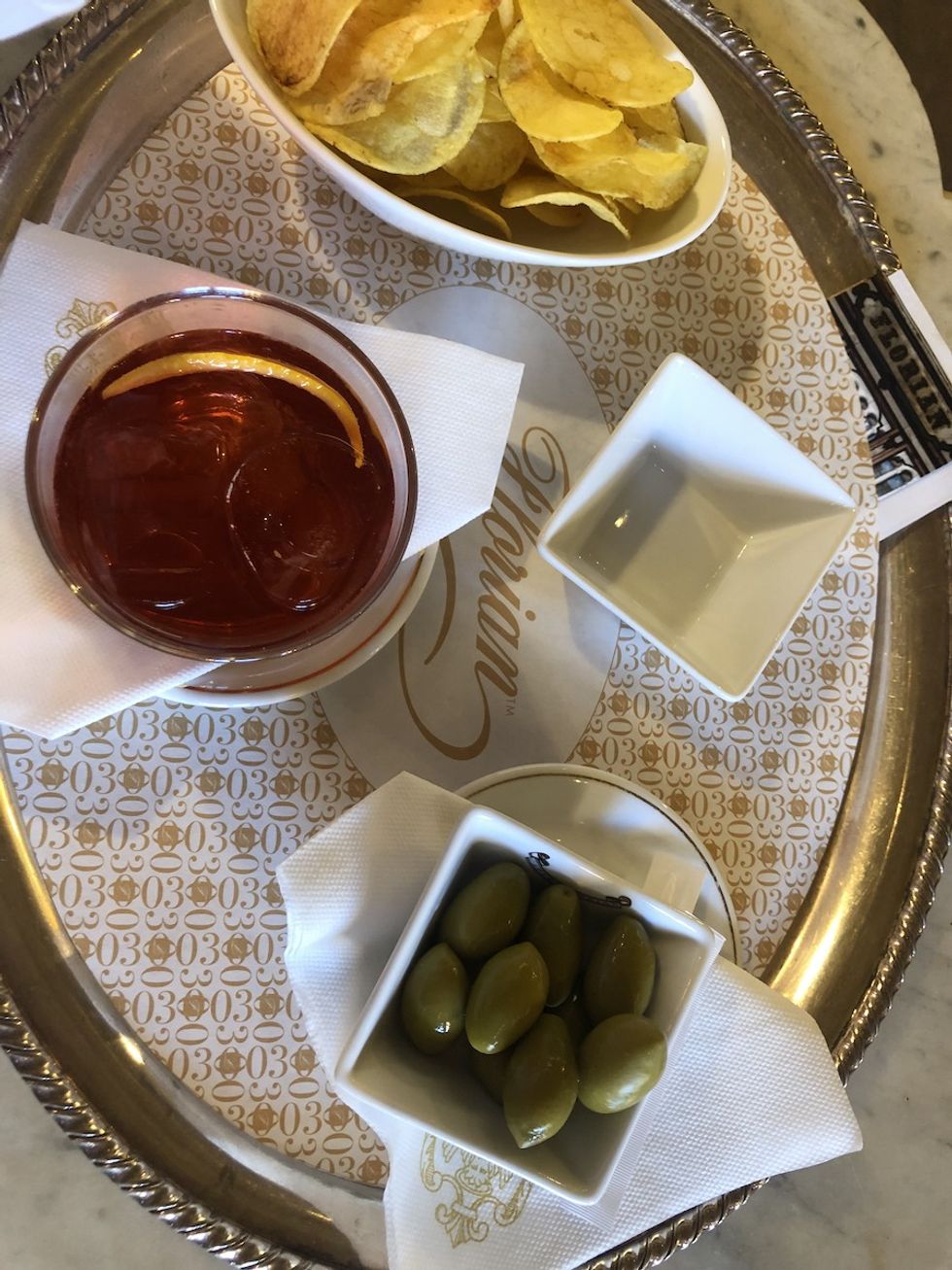
Sarah Hassan
During my previous visits to Venice, I’d had the pleasure of drinking more than one of the trademark bellinis at Harry’s Bar, the unassuming watering hole for the rich and famous steps away from Piazza San Marco. During this visit, it was time to step back into the decadent past and brave the hordes at Caffe Florian, the 300-year-old bar that faces the piazza head-on. You can balk at the prices (17 euro for a spritz, 12 euro for a hot chocolate), but show me a more economical spritz in New York City that comes with snacks presented on a silver tray by white-jacketed waiters while the music of Puccini plucked by a house orchestra drifts through the open windows. The ambiance still proudly retains its old-world charm: raspberry velvet banquets with white marble tables line the paneled walls painted with portraits of beautiful women framed by gilt work and a dizzying array of mirrors and glowing sconces, giving the rooms a nesting-doll effect as you travel the parquet floors from one to another. No wonder Casanova, the famed Venetian adventurer and legendary lover and libertine who penned The Story of My Life while mingling with European royalty, found it a worthy hunting ground for his conquests—the simple act of aperitivo or, as one woman did directly across from me, savoring an ice cream, one slow, sweet bite at a time from a long silver spoon—is downright romantic in a setting such as Florian’s.

Sarah Hassan

Sarah Hassan
If Venice still claims a Casanova, it can be found in the jovial persona of master printmaker Gianni Basso, who runs his namesake stampatore on a quiet street in the Cannaregio district. His workshop is an entirely different time capsule where personalized calling cards, bookplates, and stationary crowned with fanciful designs are churned out on a hand-cranked letterpress, something La Castiglione would’ve deemed worthy for her correspondence. Signor Gutenberg, as Basso is known both to Venetian locales and his international patrons, learned his trade from Armenian monks on the island of San Lazzaro, a former leper colony near the Lido. Basso and his workshop are Venetian institutions and he enjoys a glittering clientele from all over the world. This prestige, however, doesn’t stop him from sharing his time with whoever walks through his door. During my second visit, we toured his small museum of vintage prints, cupboards of hand-written correspondence, press clippings, and antique tools. Relishing in his stories interjected by his hearty laughter, I marveled at the curlicued handwriting and handiwork of the past, something I fear many are losing appreciation for altogether in our digital age.

Sarah Hassan

Sarah Hassan
Art is, quite literally, found at every turn in Venice, from the churches housing 16th-century masterworks to the bar at the Gritti Palace, famed for its paintings by Piero Longhi. It can overwhelm the senses, all the crucifixions and pleading saints in pastoral landscapes, to the extent that your eye begs for space and breathing room after all the gold and opulence. Enter the Palazzo Grimani, hidden in plain sight along the grand canal. Many of the richly ornamented rooms in the three-story palace are empty, save for an imposing marble fireplace or sculpted figures, and the crowds were nowhere to be found. In most Italian museums, it’s easy to be overwhelmed by the sheer size of the paintings, but in the Grimani, the vastness of the space allows tranquility for the eye as it travels from delicate floral banding to ceilings painted with dizzying mythological scenes. As if in an unstaged house, I was free to interpret the past among the muraled walls and rows of portraits painted of Grimani cardinals, the final famous room of sculpted gods and goddesses acting like a meditative garden. I relished my speckled reflection in a tarnished mirror before leaving, the indulgence that I was completely alone.
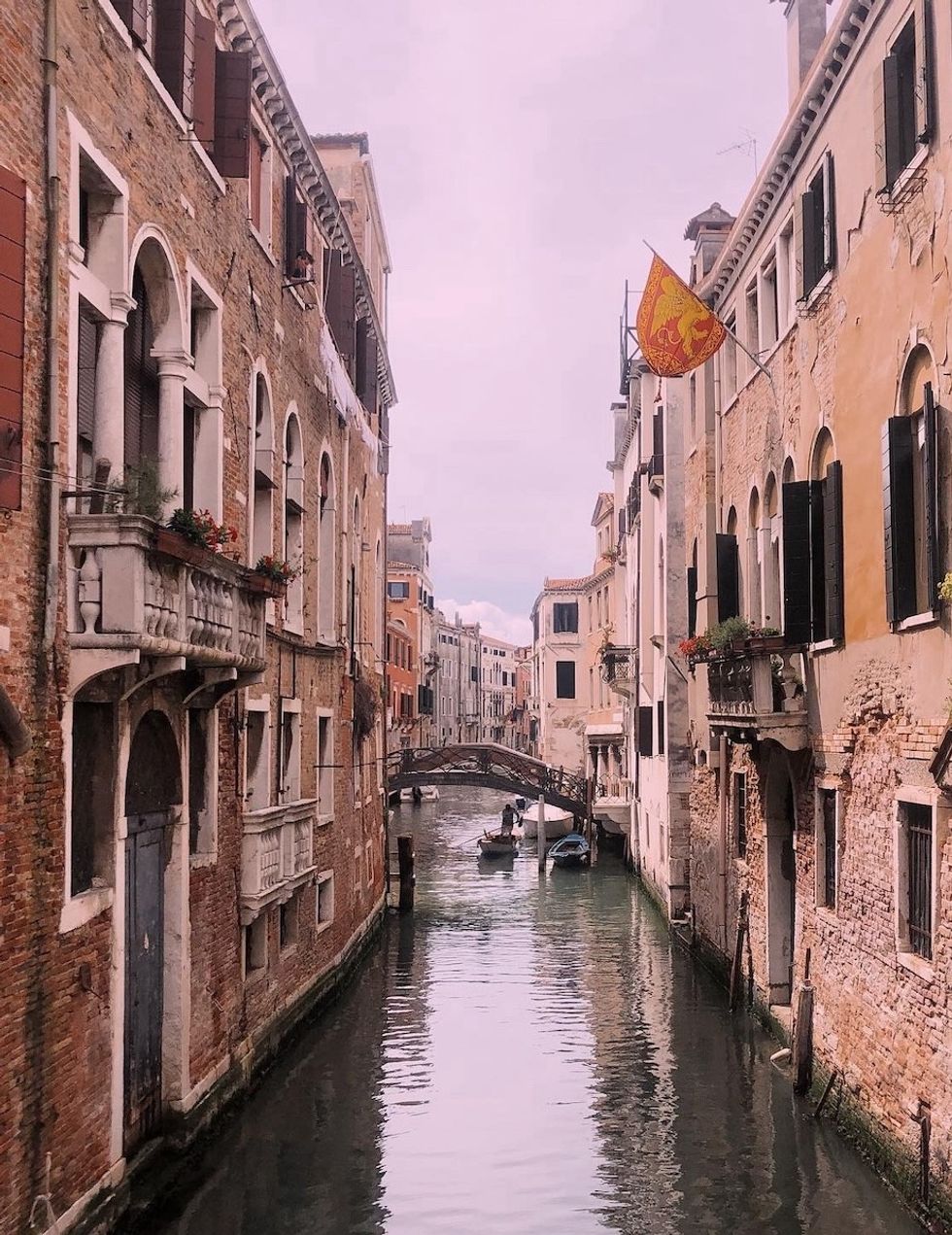
Sarah Hassan

Sarah Hassan
During my final night in Venice, I followed the sounds of accordion music in the growing darkness across the square where I had just finished dinner—unexpected, transportive sounds in this already transportive place. There, under the silver halo of the moon, was a crowd of forty or so tango dancers heeding the call of music from the bars of 1950s Buenos Aires, slow and steady in each other’s locked embrace as they traced the cobblestones with their intentional steps. A crowd had gathered beneath the trees and on stone benches, and I gazed, eyes wet, in wonder at the seriousness and sincerity of each dancer. No one was performing; no one appeared self-conscious or aware of the growing onlookers; the only thing that mattered was the music. There was nothing else to do on this Wednesday night in ghostly, gorgeous Venice but to tango, the most decadent and heartbreaking of dances befitting one of the most decadent and heartbreaking places.
Reader, I wept.




